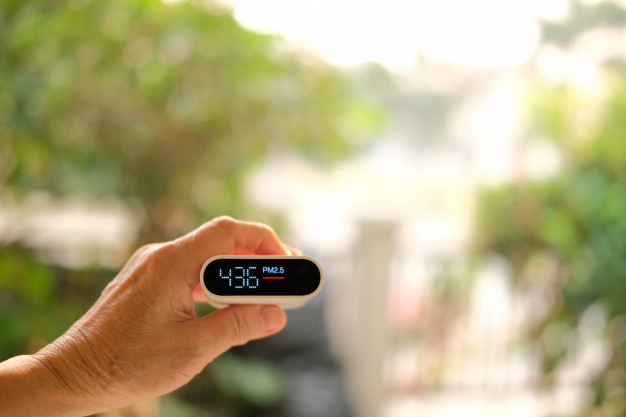Recently, the weather conditions in Thailand have been problematic due to high levels of air pollution, ranking among the top in the world. As a result, it appears hazy throughout the day, with one dangerous component being PM 2.5 dust particles, which significantly impact our health. Therefore, it's important to understand this type of dust in order to take care of ourselves and our families and stay safe from PM 2.5 dust.
Particulate Matter (PM) consists of two types based on size:
1. Coarse particles (PM10) - These are particles with a diameter less than 10 micrometers, or one-seventh the width of a human hair. They originate from natural sources such as pollen, bacteria, or household dust.
2. Fine particles (PM2.5) - These are particles with a diameter less than 2.5 micrometers, mainly caused by human activities like burning, vehicle emissions, and industrial processes. They often contain higher levels of heavy metals compared to PM10.
PM 2.5 is considered hazardous as it can easily penetrate the respiratory system, causing various health issues. During seasonal changes, such as transitioning from winter to summer, temperature fluctuations lead to increased levels of PM 2.5 accumulation. According to the World Health Organization (WHO) Air Quality Guideline 2016, the average PM 2.5 concentration in a 24-hour period should not exceed 25 micrograms per cubic meter.

Common health problems caused by PM 2.5 include:
• Irritated eyes and excessive tearing
• Nasal congestion and runny nose
• Skin irritation
• Fatigue, shortness of breath, chest tightness, and rapid breathing
These symptoms worsen in individuals with pre-existing conditions such as allergies, asthma, or respiratory infections, as well as in children and the elderly.
The primary recommendation is to reduce or avoid exposure to PM 2.5. You can monitor air quality using the Air Quality Index (AQI) to determine whether outdoor activities are safe. If the AQI exceeds 100 or is marked orange or red, it indicates poor air quality, and outdoor activities should be avoided.
To protect your health from PM 2.5:
• Check air quality frequently using apps like AIR4THAI.
• Wear a mask when necessary, especially particulate respirators like N95 or P100 if spending extended time outdoors.
• Stay indoors, especially for vulnerable groups like children, the elderly, pregnant women, or those with pre-existing health conditions.
• Avoid vigorous outdoor activities that increase breathing rate.
• Minimize indoor air pollution sources such as smoking, burning charcoal, using aerosols, or burning incense.
• Use air purifiers with efficient filters to reduce indoor PM 2.5 levels.
• Seek medical advice promptly if symptoms worsen and avoid exposure to PM 2.5.

Let's stay safe from PM 2.5 pollution!
Source: Department of Disease Control, Ministry of Public Health
: Princ Suvarnabhumi Hospital
Translated and compiled by ArokaGO Content Team





